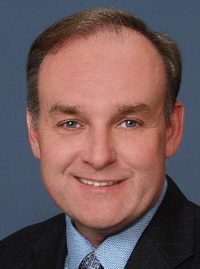Tuesday, February 8, 2011
Interview with Tracy Trent, Proximetry

One of the growth spots for the wireless market is the use of wireless equipment to connect everything from smart meters to industrial equipment. One of the players in that market is San Diego-based Proximetry, which is a venture-backed company which develops software to control the quality of service in those outdoor networks. We talked with Tracy Trent, the CEO of the company to better understand how the firm fits into that market.
What's the idea behind Proximetry?
Tracy Trent: We started the company about five years ago. In our previous company, Stellcom, which was a big product development house for wireless products, we had been lashed up with the big players in the 802.11 space, putting Wi-Fi in all sorts of things, like autos, for Coca Cola around Coke machines, and into wireless LAN switching companies. In doing that, we came up with the idea for the AirSync product, which was to provide a much more, predictable quality of service in outdoor wireless networks. The whole idea was to build a software platform that could be central to controlling those networks, across a number of different wireless protocols--WiFi, WiMAX, now moving toward LTE--making those networks more predictable, providing a higher quality of service to individual users, and supporting advanced applications like video, voice, and other stuff we've come to expect. Fast forward five years, and that product is now coming available in the market, and we're working with some pretty big names in different industry segments to build more robust wireless networks. In the smart grid communications space, we're working with the big Southern California utilities. We're also working in other industries, working with HP for the network out of the city of Anaheim. We're also working with Thales Avionics and Boeing on a concept for GateSync, a wireless network which delivers directly to commercial airliners.
Why is your technology important to those customers?

Tracy Trent: The interesting thing in traditional wireless networks, is that chances are you're dealing with a relatively stable and pre-provisioned network. However, the interesting thing about outdoor wireless networks, is that they are never stable. If you've used WiFi over an iPhone, iPad, or Android device, there's one thing you can say for certain--your service is never exactly the same. That service depends on where you are, interference, the users around you--that service experience is going to change. For consumers, that's fine--carriers don't really care whether your service experience is perfect, because it's just one snapshot in time. But, when you're talking about industry segments that is a very different deal. If you look at smart grid communications, you find it has to work, those bits have to get through, and certain device can't have latency in the network--plus, the network must be secure. AirSync is capable of bringing those QOS parameters to the network. We also take that, and further abstract it. You can't just cover a smart grid network with one technology because of coverage requirements. They might be using different carrier circuits, Verizon or AT&T, augmented by a private network which a utility puts out. AirSync can sit above those and have them all behave in a similar fashion when the user or application needs them to.
Utilities not known as big adopters of new technology. How are you getting over that hurdle?
Tracy Trent: The one item which is really helping there is a lot of stimulus funding, which has been flowing into the energy space. There are a very large number of grants, some of which we are involved in, towards smart grid communications. If you look at the kinds of investments utilities are making already, one of the biggest is around metering solutions. The deployment of smart meters has big communications requirements behind it. Those are big--very big--because literally, every household in a geography needs to traverse a wireless link. You need a robust network that can cover the entirety of a service territory, which is a big problem. So, with stimulus money, the influx of meters being deployed, and some of the really new elements of the smart grid like vehicle charging stations and solar roofs, you need communications and connectivity. That's a perfect storm for wireless networks.
Is your product all software, or is there also hardware involved?
Tracy Trent: It's all software. We get hardware from our partners, including multi radio wireless routers in airplanes, and smart grid components. The whole philosophy between AirSync, is that there are lots of companies who build hardware appliances, and although they might have software for managing their wireless networks, they are all specific to one vendor and one technology. We have platform-neutral software which runs in the data center on any kind of Linux flavor, and a series of agents embedded in anything from base stations to access points, right down to the latest Android devices. That allow you to manage services through the entire chain, from the device to the data center. It's quite novel.
So what's the next big thing for you?
Tracy Trent: We've really put together a nice, strong set of partnerships in the smart grid space. We've got relationships with Cisco and Itron, as part of the smart grid ecosystem. We're also working with progressive wireless equipment people like AirSpan, and have done system integration with CSC and SAIC. We're excited to get in and play a pretty big role in some of these networks.
Thanks!